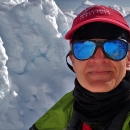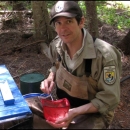This report and its associated appendices analyze the sensitivity, exposure, impact, adaptive capacity, and vulnerability of Entiat National Fish Hatchery and its summer Chinook broodstock broodstock
The reproductively mature adults in a population that breed (or spawn) and produce more individuals (offspring or progeny).
Learn more about broodstock program to the long-term trends in climate and increased likelihood of extreme weather events that could significantly affect USFWS programs and hatcheries in the Columbia-Pacific Northwest Region.
The U.S. Fish and Wildlife Service (USFWS) is assessing the vulnerability of its National Fish Hatcheries (NFHs) in Washington, Oregon, and Idaho in response to projected future climates. The Assessment Team has completed climate change climate change
Climate change includes both global warming driven by human-induced emissions of greenhouse gases and the resulting large-scale shifts in weather patterns. Though there have been previous periods of climatic change, since the mid-20th century humans have had an unprecedented impact on Earth's climate system and caused change on a global scale.
Learn more about climate change vulnerability assessments (CCVAs) for Winthrop NFH (USFWS 2013), Quilcene NFH (USFWS 2016), Makah NFH (USFWS 2019) Warm Springs NFH (2021) and Entiat NFH (2021). These assessments are focused on NFH vulnerabilities at the hatchery and local watershed levels and are motivated by long-term trends in climate and the increased likelihood of extreme weather events that could significantly affect USFWS programs and hatcheries in the Columbia-Pacific Northwest Region. Other agencies are evaluating climate change vulnerabilities of anadromous salmonid fishes in the marine environment and freshwater migration corridors. 2 The report presented here represents the USFWS’s CCVA for Warm Springs NFH in central Oregon.
Please cite as:
U.S. Fish and Wildlife Service (USFWS). 2021. Entiat National Fish Hatchery: Climate Change Vulnerability Assessment, Final Report, December 2021. Climate Change Vulnerability Assessment Team for National Fish Hatcheries, Columbia-Pacific Northwest Region, U.S. Fish and Wildlife Service, Portland, Oregon. 45pp. + 4 Appendices.






